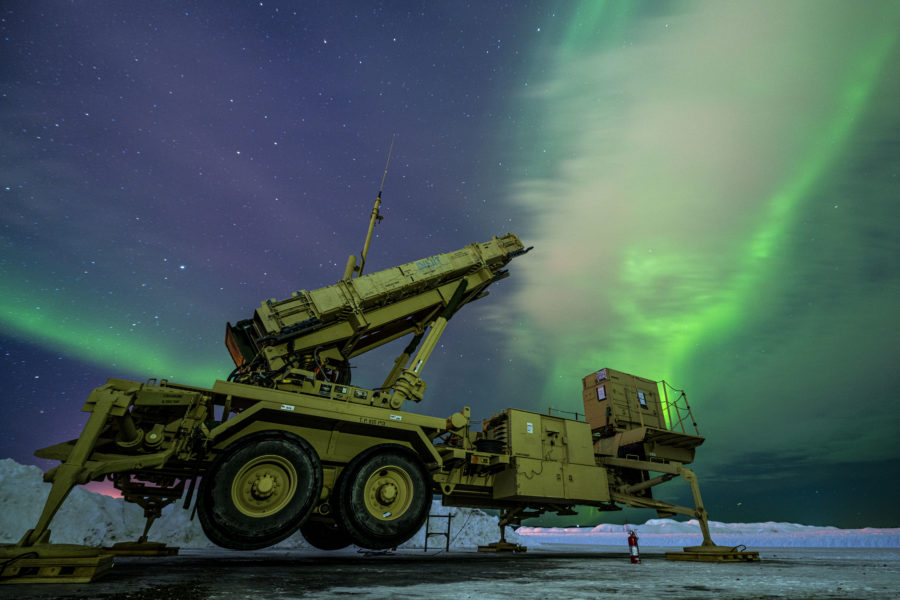The Department of Defense and the armed services are focused and cooperating like never before on the logistical challenges of operating in the Pacific—exemplified by how the Army and Air Force are working together on air defense, USAF officials said Aug. 29.
The challenge of dispersed operations across the Pacific, in austere locations and under the threat of missile attack and denied communications, has “galvanized” the Pentagon, said Brig. Gen. Michael Zulsdorf, deputy director of resource integration for engineering, logistics and force protection, during a virtual event hosted by the Mitchell Institute for Aerospace Studies.
“I have been in and out of the Pentagon since 2009, and I’ve never seen more galvanized, cohesive teamwork from the Department of Defense, through the respective services,” Zulsdorf added. “This is amazing to see. And it’s awesome that we can work together and fight through typical sister service-specific stovepipes and break that down.”
All the services are in the same predicament and are searching for cost-effective, joint solutions, he noted.
The Army has previously focused on theater-level air defenses like the Patriot and Terminal High-Altitude Area Defense (THAAD) systems. But those weapons are too few and too expensive to defend small operating locations, a key component of the Air Force’s plan for Agile Combat Employment.
Now, the Army is stepping up to this new challenge of defending smaller bases, said Todd Serres, associate chief for command and control and integrated air and missile defense for the deputy chief of staff for operations.
“The Army is developing additional capability and capacity for active air defense,” Serres said. “The conundrum comes in that they’re not necessarily developing it for air bases, right? They provide air defense capabilities to the Joint Force Commander,” who in turn decides where they will be placed.
Air defense is “on their priority list,” Serres added. “And I think it’s in their top five—maybe toward the bottom of their top five—but they’re continuing to develop air defense capabilities and enhancing those capabilities and even developing them to operate more in smaller ‘packets,’ if you will.”
Such packets would be especially useful for the Air Force’s ACE concept.
At the same time, the Army doesn’t see defending air bases as solely its responsibility, Serres observed. Though Pentagon roles and functions directives assign the Army missile defense and force protection, “it’s a function that all services bear some responsibility [for], and force protection is assigned to all services.”
In 2021, Congress tasked the Secretary of Defense with studying the roles and functions in integrated air and missile defense, Serres noted. The Army is permitted to develop systems for air base defense but isn’t directed to do so.
Still, “we have historically relied upon the Army and I think we’ll continue to do so, primarily,” Serres said.
Congress has also directed the Air Force and Army to look at how they defend forward air bases and pre-positioned equipment sites, and the services “came up with a strategy for doing so,” Seres said.
That strategy “acknowledges the Army’s predominance in providing defense but also acknowledges … the limited numbers of active defenses are going to have to be ‘robusted,’” he said. The Air Force “may have to contribute some to a joint layer defense of our bases, particularly where it applies to” remote or austere locations as part of ACE, he said.
Zulsdorf said the Air Force is looking toward electronic warfare, unmanned aerial systems, directed energy, cyber operations, and other advanced concepts to defend ACE locations, primarily from small drones and cruise missiles. Many of those technologies are not yet mature and require extensive up-front investment, but Serres said the Air Force and Army are collaborating some on those efforts, while still pursuing them separately.
At the moment, “we are on the wrong side of the cost curve” against overwhelming missile attack, Serres said—interceptors like THAAD and Patriot cost much more per shot than cheap missiles.
Technologies like electronic warfare, directed energy, and cyber “offer exactly what the Air Force is looking for. We need to get on the right end of the cost curve,” he added, noting that they will give the service increased capacity, be “much more supportable” and reduce the logistics associated with transporting gun or missile systems and ammunition when the goal is to stay light, lean, and mobile.
In terms of the Air Force’s contribution to a layered, active base defense, “our analysis indicates that our best [near-term option] is to go after the UAS problems, cruise missile defense, and leave the majority of defense against ballistic [missiles] and hypersonics and the area defense capabilities to our sister services and Joint partners,” Serres said.
